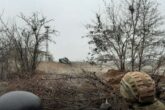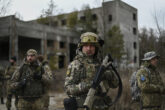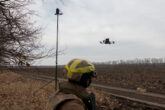September 09, 2021
Confronting Chaos: a New Concept for Information Advantage
“It failed miserably.” With these words, Gen. John Hyten dropped a bomb on the Defense Department’s vision for fighting China and Russia, the joint warfighting concept. He told a defense industry group that an adversary red team “ran rings around” a U.S. team using the concept in an October 2020 wargame. Some defense thinkers claimed this was no big deal. However, although American teams lose wargames all the time, this is, in fact, a very big deal.
The joint warfighting concept is a top priority for the Pentagon. It’s supposed to align the armed services’ operational thinking and inform future force development. The Defense Department has been developing the concept for years, and yet it still failed. More worrying is why it failed. According to Hyten, the concept assumed U.S. forces could achieve information dominance in a great-power conflict, akin to what the American military attained during the 1991 Gulf War. That assumption is fatally flawed.
The side that can deal with chaos and operate more effectively with degraded systems will likely seize the initiative.
Nearly three years after the 2018 National Defense Strategy identified gaining and maintaining information advantage as a critical mission, thinking among Defense Department leadership about information advantage remains muddled. They don’t understand what it means, what it requires, or how to achieve it. This intellectual vacuum permits “zombie ideas” like information dominance to shamble onward while the department and armed services treat technology as a panacea for their operational and strategic headaches.
There’s an exit from this morass. The Pentagon should accept that the post-Gulf War era of imagined U.S. information dominance is over and abandon the idea of connecting “every sensor to every shooter.” Instead, it should design its concepts around the fact that degradation, disruption, and disorder are endemic features of warfare and focus on connecting enough sensors to enough shooters under combat conditions. The department should build new networks and data processing technologies, but it should also recognize the critical role of humans in the emerging “techno-cognitive confrontation” with China and Russia. Gaining information advantage requires accompanying new technologies with updated command philosophies, organizational constructs, and training paradigms that will allow U.S. forces to prevail in the chaotic conditions that will characterize great-power conflicts. The alternative is more failure and possible military defeat.
Read the full article from War on the Rocks.
More from CNAS
-
Defense / Transatlantic Security
When Defense Becomes Destruction: Austria-Hungary’s Mistake and Ukraine’s RiskThis article was originally posted on War on the Rocks. The southeastern Polish city of Przemyśl, with its elegant 19th century Habsburg-era train station, remains one of the ...
By Franz-Stefan Gady
-
Defense / Transatlantic Security
Ukraine’s Catch-22 MomentThis article was originally published in the Financial Times. In Joseph Heller’s wartime classic, Catch-22, the protagonist Yossarian seeks out the US army surgeon Doc Daneeka...
By Franz-Stefan Gady
-
CNAS Insights | Budgetary Own Goals Undermine “Speed and Volume”
On November 7, Secretary of Defense Pete Hegseth laid out a plan to overhaul the Department of Defense’s (DOD’s) acquisition system. Placing an emphasis on delivering new capa...
By Philip Sheers, Carlton Haelig & Stacie Pettyjohn
-
Drones: Who Is Making the New Weapons of War?
From Ukraine and Russia to Gaza and Sudan, drones have become a key weapon of war. Which companies are making them, and profiting from this rapidly expanding but controversial...
By Stacie Pettyjohn




